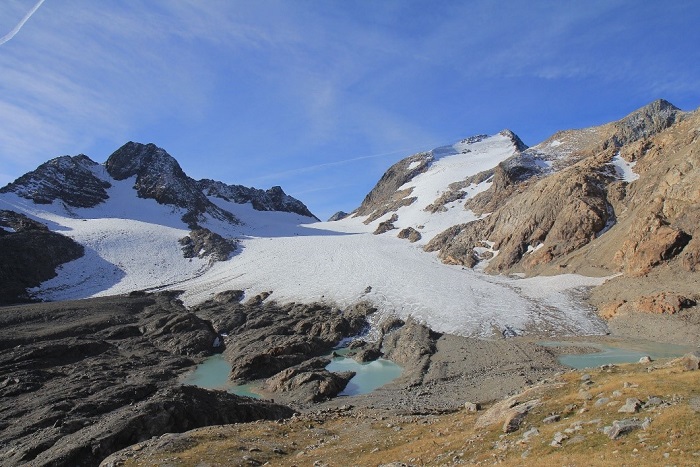
A novel study reveals a significant decline in glaciers on a global scale
Since 2000, the world's glaciers have lost 5% of their initial volume, and 273 billion tonnes of ice are disappearing every year - the equivalent of 3 Olympic swimming pools per second. These are the results of an in-depth study of the global evolution of glaciers (excluding the Antarctic and Greenland ice sheets) between 2000 and 2023, based for the first time on a combination of field measurements and satellite observations. This unprecedented study was carried out by the Glambie1 international consortium, made up of 35 research teams including researchers from CNRS, CNES, INRAE and IRD2 . The findings has been published in the magazine Nature on February 19.
The scientists also noted a record loss of glacier mass in 2022 and 2023 and revealed that the Alps and the Pyrenees in Europe have lost around 40% of their volume in less than a quarter of a century, which makes them the regions of the globe with the greatest relative loss of ice.
The diversity and complementarity of the methods used3 in this study are sources of particular reliable data, enabling scientists to carry out increased and more regular monitoring4 of glacier melt. These results will feed into the next IPCC report, due in 2029.

- 1Glambie is a research initiative coordinated by the World Glacier Monitoring Service (WGMS), hosted by the University of Zurich, in collaboration with the University of Edinburgh and Earthwave Ltd.
- 2Glambie involves scientists from the Laboratoire d'études en géophysique et océanographie spatiales (CNES/CNRS/IRD/Université de Toulouse III - Paul Sabatier) and the Institut des géosciences de l'environnement (CNRS/INRAE/IRD/Université Grenoble Alpes).
- 3The French teams contributed in particularly to measurements of changes in glacier thickness using ASTER images from the Terra satellite and changes in mass using data from the GRACE satellites.
- 4
Community estimate of global glacier mass changes from 2000 to 2023.
Michael Zemp, Livia Jakob, Inés Dussaillant, Samuel U. Nussbaumer, Noel Gourmelen, Sophie Dubber, Geruo Aa, Sahra Abdullahi, Liss Marie Andreassen, Etienne Berthier, Atanu Bhattacharya, Alejandro Blazquez, Laura F. Boehm Vock, Tobias Bolch, Jason Box, Matthias H. Braun, Fanny Brun, Eric Cicero, William Colgan, Nicolas Eckert, Daniel Farinotti, Caitlyn Florentine, Dana Floricioiu, Alex Gardner, Christopher Harig, Javed Hassan, Romain Hugonnet, Matthias Huss, Tómas Jóhannesson, Chia-Chun Angela Liang, Chang-Qing Ke, Shfaqat Abbas Khan, Owen King, Marin Kneib, Lukas Krieger, Fabien Maussion, Enrico Mattea, Robert McNabb, Brian Menounos, Evan Miles, Geir Moholdt, Johan Nilsson, Finnur Pálsson, Julia Pfeffer, Livia Piermattei, Stephen Plummer, Andreas Richter, Ingo Sasgen, Lilian Schuster, Thorsten Seehaus, Xiaoyi Shen, Christian Sommer, Tyler Sutterley, Désirée Treichler, Isabella Velicogna, Bert Wouters, Harry Zekollari, Whyjay Zheng. Nature, le 19 février 2025.
DOI: https://doi.org/10.1038/s41586-024-08545-z

